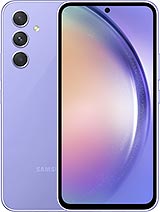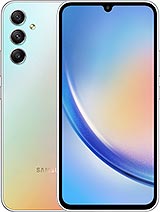Xiaomi Redmi Note 13 Pro 5G review

MIUI 14 on top of Android 13
The Redmi Note 13 Pro runs MIUI 14 on top of Android 13. All Redmi Note 13 models will get an update to HyperOS later on. So far, there is no word on the promised update support, but it will likely be the same as on the Poco X6 models - three years of major Android updates and an extra year with security patches only.

Some of the most notable MIUI 14 features include the native text recognition in the Gallery app, easier Xiaomi smart devices management through Smart Devices, enlarged home screen folders, the ability to uninstall most system apps, and incredibly optimized CPU, GPU, and memory usage.
The home screen, recent apps and general settings remain unchanged. The app drawer is enabled by default, but it can be disabled, unlike on the Poco version. We like the search bar at the bottom of the screen for easier reach. There are custom and preset app categories for faster navigation.








Home screen, recent apps, settings menu, app drawer
The split between a notification shade and Control Center is enabled by default, and that's probably a good thing. We found it to be quite convenient, and it's a way to educate users about MIUI's unique approach to the UI. And in case you are not a fan, you can always revert back to the standard notification shade with quick toggles in one place.


Control center and notification panel
Unlike the standard recent apps menu, MIUI's one lists the apps in a vertical arrangement (you can switch to the standard horizontal alignment) and provides several useful shortcuts. That's where you can open up apps in floating windows. However, you can keep up to two apps open at a time. In case you want a faster shortcut to apps that support free-form windows, just enable the Sidebar.
The sidebar becomes Video Toolbox in video player apps such as YouTube. It essentially contains the whole Sidebar functionality, but besides options for floating windows, it contains shortcuts for Screenshot, Record screen, Cast, and Play Video with the screen off, which works on YouTube, no Premium subscription needed. But, as we mentioned, you need to whitelist the apps in advance where you want the feature enabled.
Themes have always been a huge part of MIUI, and they are available on MIUI 14, too. You can download new ones from the Themes store, and they can change wallpapers, ringtones, system icons, and even the always-on display style.





Themes and other customization options
Of course, Always-on display customizations are also available in addition to the presets. To our surprise, there's no true Always-on display functionality, as it can only be shown for 10 seconds after tapping on the locked screen. It's not "always on".
The Notification effect lights up the edges of the display when new notifications come in, but there's little in the way of customization other than a couple of different colors and a 'Starlight' option. This effect can work with or without the AoD. Disappointing.
Moving on to privacy and security, MIUI has come with a pre-installed system Security app. Aside from the additional malware protection layer it provides, the app holds many of the app settings and privacy features in one place. It can manage your blacklist, manage or restrict your data usage, configure battery behavior, and free up some RAM. It can also manage the permissions of your installed apps, define the battery behavior of selected apps, and apply restrictions only to certain apps.
All in all, MIUI 14 has changed little over the 13th iteration in terms of overall user experience, and that's not bad. It's just as snappy and customizable as ever. Xiaomi has paid special attention to the haptics on this unit as well - we found the motor to be crisp, strong, accurate and responsive. It reacts to many actions across the system and when navigating. There's even a haptic feedback intensity if you find it obtrusive or not strong enough.
Finally, there are some ads, but they can be stopped from within the Settings in the app that shows advertisements and/or recommendations.
Performance and benchmarks
The Redmi Note 13 Pro is the second smartphone we got running on the Snapdragon 7s Gen 2 by Qualcomm, a chipset built on the 4nm process technology and one that is a bit faster version of the Snapdragon 6 Gen 1. This platform is not as powerful as the 7+ Gen 2 or even the original 7 Gen 1. But it offers a performance increase over the Dimensity 1080 inside the Redmi Note 12 Pro.
The Snapdragon 7s Gen 2 features an octa-core processor with 4x Cortex-A78 @2.4GHz and 4x Cortex-A55 @1.95GHz. There is no Prime here, and the core design is older (2020).
The SD7sG2 uses Adreno 710 GPU, which premiered on the Snapdragon 6 Gen 1 SoC. It is listed to support FHD+ resolution at 144 Hz.

The FastConnect 6700 connectivity platform is a step back from the 6900 on the Snapdragon 7+ Gen 2, and with it, the peak DL speed is just 2.9 Gbps, while Bluetooth supported is capped at 5.2, which still supports low-energy audio.
The Spectra ISP supports a smartphone with a single camera up to 200 MP and 4K video capture at 30 fps. Memory is LPDRR5 at 3200 MHz, while other features include USB-C 3.1 and Quick Charge 4+.
The global Redmi Note 13 Pro is available in two configurations of LPDDR4X RAM + UFS2.2 storage - 8GB + 256GB and 12GB + 512GB (ours).
And now, it's time to run some benchmarks.
Even without a Prime core, the Redmi Note 13 Pro offers one very capable processor, as evidenced by the performance tests.
The GPU is absolutely adequate for the mid-range and should do just fine for most games.
The AnTuTu tests put the Redmi Note 13 Pro around the Poco X6, Galaxy A54 and Realme 11 Pro.
Finally, the stability tests gave us solid performance - 70% of CPU stability and 99% for CPU stability. Excellent scores, indeed!
Overall, the Redmi Note 13 Pro is adequately equipped for the affordable mid-range class and offers great performance and stability for its pricing, and enough jump over the Redmi Note 12 Pro.
Reader comments
- Igor
- 03 Mar 2025
- 8rX
Hello everyone. Late last year I bought this phone, Europe, Global version. A few days ago I received a notification about upgrading to the new HyperOS 2. What are your experiences and does anyone have a problem with applications, e-banking, etc.? ...
- Freefaller
- 27 Feb 2025
- nFQ
Hyper OS2 has arrived in the UK Version 2.0.4.0.VNREUXM Security Patch dated January 2025 Download 5.5Gb
























